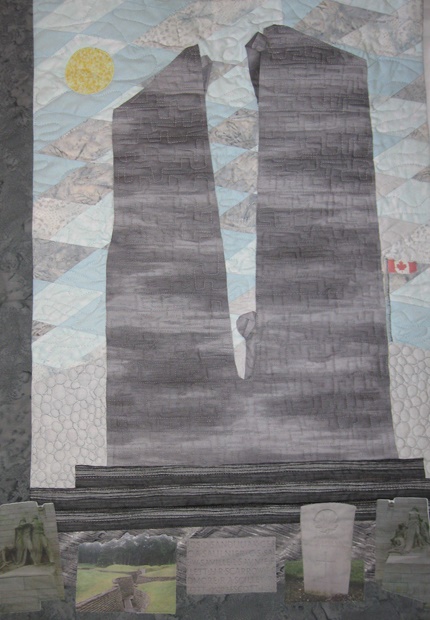In 2014, we were fortunate enough to visit Vimy Ridge.
When struck by the beauty and peacefulness of the area, it’s hard to imagine that 100 years prior, the same fields were a place of death and unimaginable horrors.
Here are some of the photos we took of the Canadian National Vimy Memorial, the surrounding battlefields and cemeteries.
 The Canadian National Vimy Memorial atop Hill 145, which 4 divisions of Canadian Expeditionary Force assaulted and captured on April 9th, 1917. The Canadian National Vimy Memorial atop Hill 145, which 4 divisions of Canadian Expeditionary Force assaulted and captured on April 9th, 1917. |
 The Canadian National Vimy Memorial designed by Canadian Walter Seymour Allward. The memorial is rich in symbolism. The Canadian National Vimy Memorial designed by Canadian Walter Seymour Allward. The memorial is rich in symbolism. |
 Foreground: The male mourner Foreground: The male mournerBackground: The female mournerThey represent the mourning mothers and fathers of Canada. |
 |
 |
 |
| Three views of Mother Canada.
She faces the fields where thousands of her sons, for who she forever mourns, were lost. |
||
 |
| In addition to the symbolism, the names of the 11,285 Canadians killed in France with no known final resting place are inscribed on the base of the monument. |
 |
 |
 |
 |
| Bunker and trench system on Vimy Ridge. | |
 |
 |
 |
 |
 |
 |
| Canadian Cemetery No. 2 is the final resting place of 2,965 Commonwealth soldiers, many of whom are unknown. | ||
 |
| Upon returning from France I commissioned my wife to create a quilt based on the Vimy Memorial and the photos we took. |
Vimy Ridge and the surrounding areas are beautiful and tragic. While we hope you enjoy the photos we took, however they do not do Vimy Ridge justice.
We strongly urge you to spend your next vacation exploring the World War I battlefields of France, Belgium, and Germany.
If you would like to learn more about the people and machinery of World War I, check out our section of World War I books.










Leave a Reply